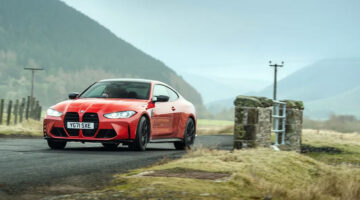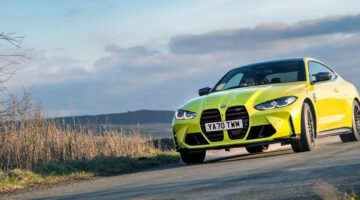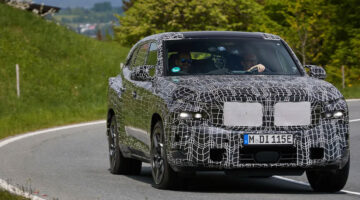BMW’s smallest M-car has been extensively reworked, but is it enough to elevate the all-new M2 Competition to the top of the class?
| Engine | Power | Torque | 0-100kph | Top speed | Weight | Price |
|---|---|---|---|---|---|---|
| In-line 6-cyl, 2979cc, twin-turbo | 404bhp @ 5250-7000rpm | 406lb ft @ 2350-5200rpm | 4.4sec | 250kph (limited) | 1550kg (265bhp/ton | $64,800 |
| Hugely improved over standard M2, riotous fun to drive | |
| All that enjoyment comes at enormous cost |
It’s always been a bit of a HEAD-scratcher, the BMW M2. On
You could find evidence of this in the M2’s slightly ragged handling, but the biggest clue to its somewhat mongrel status was its 3-litre turbocharged straight-six, which was essentially a lightly modded version of the N55 unit used in the now-defunct M135i. It wasn’t a bad engine, but neither was it an outstanding one. Preferring to do its work in the mid-range, it lacked both the top-end frenzy and nape-tingling war cry of proper M-cars. It sounded and felt, well, a bit ordinary.
This is where the M2 Competition comes in. It replaces the standard M2, and rather than undergoing a spot of light cosmetic surgery, it’s had a full-on heart transplant in the form of the M4’s glorious S55 motor, twin-turbos, ‘closed-deck’ block, lightened crankshaft, enhanced cooling system, strengthened pistons and all. There’s also a new exhaust system, complete with de rigueur active bypass valves for more bombast. The result is 404bhp and 406lb ft of torque – increases of 39bhp and 37lb ft respectively. Very promising, albeit slightly down on an M3/M4’s 425bhp, even if the torque figure is a match.
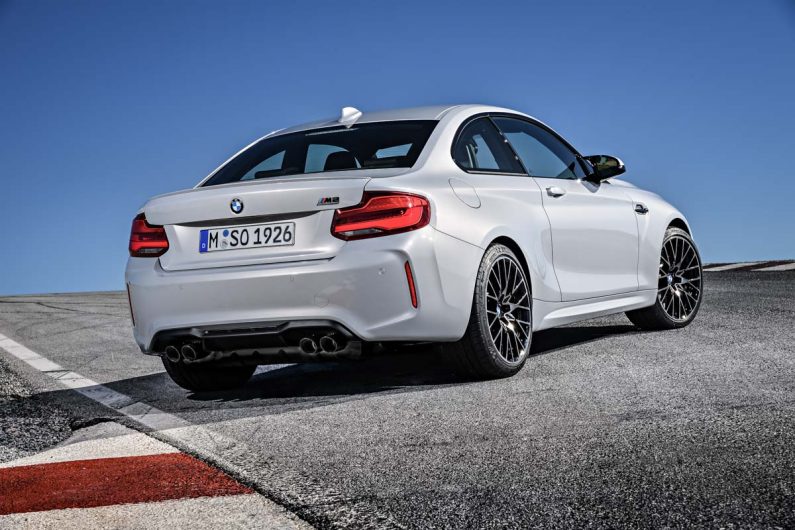
The M4 also donates its carbonfibre brace for the front struts and bulkhead, increasing rigidity for more precise and accurate steering, or so the theory goes. Elsewhere it’s as before, which means the same M4-derived suspension, with the same spring and (passive) damper rates. However, the multi-link rear axle gets ball joints in place of rubber bushes, while both the electronically controlled rear differential and stability control have received some digital development to cope with the car’s ‘greater agility’.
It’s in at the deep end with the M2 Competition at the beautiful Ascari circuit that twists, rises and falls through the mountainous scenery of southern Spain. I’ve chosen a manual car (there’s a seven-speed DCT option, but the M2 has always been a natural three-pedal machine) and after a short briefing we’re out on the circuit for some high-speed ‘follow the leader’. A few things quickly crystallise, the first of which is that the duck to our ducklings, factory GT driver Nicky Catsburg, isn’t hanging about. The second is that the M2 is a car transformed. It’s the engine you notice first. Yes, the performance is stronger (top speed is a heady 278kph with the optional M Driver’s Package), but it’s the delivery that’s changed. It pulls from low down with the same lag-free muscle of the old unit, but it now hungers for revs, eagerly spinning to the 7500rpm red line with a lovely mechanical growl and a hint of turbo whistle. It’s enough to make 718 Cayman owners weep.
The body strengthening has also done the trick. The already meaty steering now feels more precise, the front end responding crisply to instructions. Traction is strong out of slower corners, while through faster stuff there’s glorious balance, with subtle stabilising understeer easily neutralised with a lift or prod of the throttle. Switching off the stability control reveals a car that can be steered as effectively with your right foot as it can with the steering, the stiffer rear axle and tweaked diff delivering a more faithful and progressive breakaway. At the end of our stint the only demerits are the six-speed manual’s slightly baulky shift action and the grumbling of brakes – although they still stopped the M2 effectively.
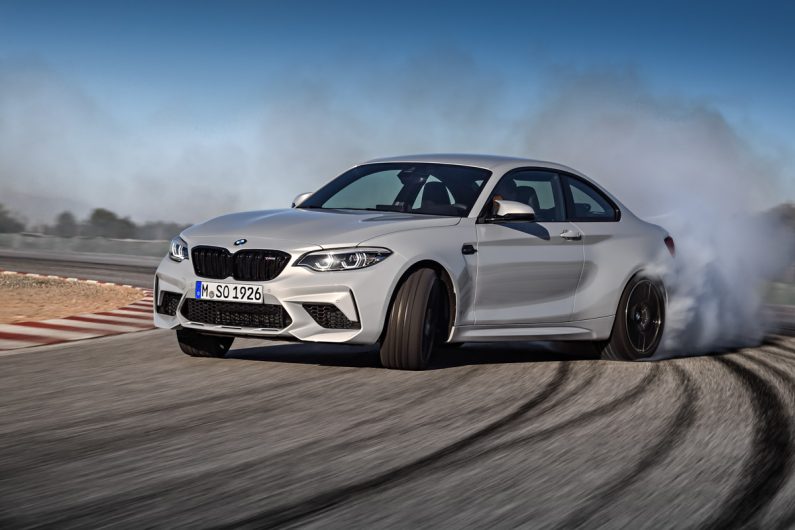
Yet it’s on the road that the Competition really makes sense. The roads around Ascari are genuinely testing, running from smoothly surfaced and quick to tight and viciously lumpy. You notice the firmness first, the BMW jiggling in rhythm with the road at low to medium speeds. Yet pick up the pace and this tautness is your ally, helping keep the Competition’s cornering stance flat and tightly controlling body movements – only over a short but wickedly bumpy stretch does the car get unruly.
At saner speeds there’s virtually no front-end slip, the Competition simply latching tenaciously onto your chosen line. Yet there’s still plenty of scope for the car to show its playful side, the combination of generous torque, sharp throttle (you can now tune throttle and steering individually) and new-found precision in the rear axle allowing you to either revel in strong traction or tease the car’s tail out at corner exit. The M Dynamic Mode is particularly impressive, giving you just enough slide before gently intervening. And when you’re not chasing a lap time you can be more patient with the gearshift, finessing the stubby, short-throw lever. That said, such is the engine’s elasticity that along these switchback roads third is all you need, the twin-turbo pulling willingly from just over 1000rpm before howling to the wrong side of 130kph. Up here in the hills the agile and engaging M2 is a genuine hoot.
In fact, one word keeps springing to mind: fun. Make no mistake, the Competition is a serious piece of kit (the $4k premium confirms that), but it’s also always up for a good time. It allows you to access more of its performance and grip more of the time and, crucially, places the driver front and centre of the action. The head-scratching is over, because the M2 is finally the car it always should have been and is arguably the pick of today’s M line-up..

